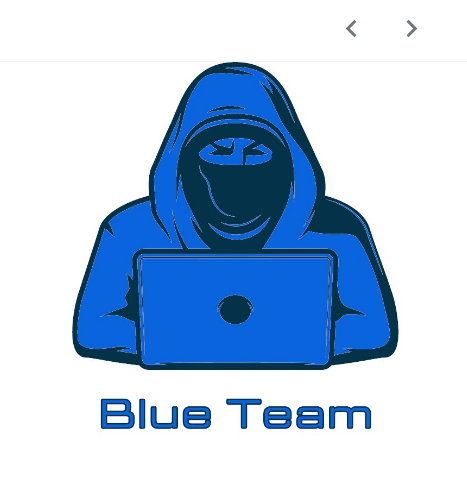English, Russian, Azerbaijani

₼400.00
₼450.00Upon completion of the course, students are awarded a certificate
Network Foundamentals
Routers.
Layer 2 and Layer 3 switches.
Next-generation firewalls and IPS.
Access points.
Endpoints, Servers.
PoE.
Network Security Foundamentals
İntroduction OSİ Model.
İntroduction CİA model.
Confidentiality.
İntegrity.
Avialibility.
Verify IP parameters for Client OS (Windows, Mac OS, Linux) Describe wireless principles
Nonoverlapping Wi-Fi channels.
SSID.
RF.
Encryption.
Describe switching concepts
MAC learning and aging.
Frame switching.
Frame flooding.
MAC address table.
Configure and verify interswitch connectivity
Trunk ports.
802.1Q.
Native VLAN.
Configure and verify Layer 2 discovery protocols (Cisco Discovery Protocol and LLDP)
Describe AP and WLC management access connections (Telnet, SSH, HTTP,HTTPS, console, and TACACS+/RADIUS)
Configure the components of a wireless LAN access for client connectivity using GUI only such as WLAN creation, security settings, QoS profiles, and advanced WLAN settings
Configure network devices for remote access using SSH
Define key security concepts (threats, vulnerabilities, exploits, and mitigation techniques)
Describe security program elements (user awareness, training, and physical access control)
Configure and verify device access control using local passwords
Describe security password policies elements, such as management, complexity, and password alternatives (multifactor authentication, certificates, and biometrics)
Describe IPsec remote access and site-to-site VPNs
Configure and verify access control lists
Configure Layer 2 security features (DHCP snooping, dynamic ARP inspection, and port security) Differentiate authentication, authorization, and accounting concepts
Describe wireless security protocols (WPA, WPA2, and WPA3)
Configure WLAN using WPA2 PSK using the GUI
Getting Started With Firewalls
User Interface.
Security Appliance Access Modes.
File Management.
Viewing and saving your configuration.
ASA Image Software Management.
Password Recovery Procedure.
Security Levels.
Security Level Examples.
Rules for Traffic Flow between Security Levels.
Basic Firewall Configuration.
Configuring Network Address Translation.
Network Address Translation (NAT) Overview.
Configuring Dynamic NAT Translation.
Network Object NAT Configuration.
Configuring Dynamic Port Address Translation (PAT).
Configuring Static Address Translation (Static NAT).
Configuring Identity NAT.
Using Access Control Lists (ACL)
ACL Overview.
ACL Configuration.
Editing Access Control Lists.
ACL Changes in ASA Versions 9.x (9.0, 9.1 and later).
Controlling Inbound and Outbound Traffic with ACLs.
Configuring Object Groups for ACLs.
Network Object Groups.
Service Object Groups.
Time Based Access Lists.
Configuring VLANs and Subinterfaces. IPSec VPNs
What is IPSec.
How IPSec Works.
Site-to-Site VPN using IKEv1 IPSEC.
Site-to-Site IKEv1 IPSEC VPN Overview.
Configuring Site-to-Site IKEv1 IPSec VPN.
Restricting VPN Traffic between the Two Sites.
Configuring Hub-and-Spoke IKEv1 IPSec VPN.
Site-to-Site VPN using IKEv2 IPSEC.
IKEv2 Site-to-Site VPN Overview.
IKEv2 Site-to-Site VPN Configuration.
Cyber Criminals
What Color is My Hat.
Thwarting Cyber Criminals.
Cybersecurity Job Hunt.
Threat Identification.
Identify the NIST/NICE Cybersecurity Specialty Areas.
Exploring the World of Cybersecurity Professionals.
Creating a Cyber World.
Communicating in a Cyber World.
Cyber Attac types
Identify Types of Malicious Code.
Identify Email and Browser Attacks.
Identify Social Engineering Tactics.
Identify Social Engineering Threats.
Identify Cyber Attacks.
Detecting Threats and Vulnerabilities.
Configuring WEP/WPA2 PSK/WPA2 RADIUS.
Identify Types of Application and Web Attacks.
Encryption types
Exploring the Vigenere Cipher.
Using Symmetrical Encryption.
Using Asymmetrical Encryption.
Comparing Symmetrical Versus Asymmetrical Encryption.
Identify Access Control Strategies.
Identify Authentication Methods.
Comparing Types of Security Controls.
Using Steganography.
Configuring VPN Transport Mode.
Configuring VPN Tunnel Mode.
Hashing
Identify Hashing Terminology.
Password Cracking.
Using Digital Signatures.
Order the Steps in the Certificate Process.
Identify the Database Integrity Controls.
Remote Access.
Risk Analysis and Redundancy
Perform an Asset Risk Analysis.
Identify the Layers of Defense.
Router and Switch Redundancy.
Router and Switch Resilience.
Order the Incident Response Phases.
Defensing
Hardening a Linux System.
Hardening Wireless and Mobile Devices.
Defending Systems and Devices.
Hardening Servers.
Hardening Networks.
Auditing a Linux System.
Server Firewall and Router ACLs.
Cyber Ethics
Matching Cybersecurity Domains.
Exploring Cyber Ethics.
Matching Cybersecurity-related Laws.
Using the Appropriate Tool.
Skills Integrated Challenge.
Who is a Cyber Security Professional?
Cybersecurity professionals are people who have the authority to protect systems, networks, and data from attacks, and to apply the necessary technologies and techniques to detect and destroy attacks. These experts work to test the security of systems and networks, prevent cyber attacks, and mitigate the effects of attacks. In addition, cybersecurity professionals implement organizations' cybersecurity policies and procedures.
There are two teams of highly trained cyber security experts - Red Team/Blue Team. Red Team/Blue Team simulations play a critical role in protecting an organization from a wide range of cyber attacks from today's advanced adversaries.
What is Blue Team?
The red team plays offense, while the blue team plays defense. Typically, this group consists of incident response consultants who provide guidance to the IT security team on where improvements are needed to stop sophisticated types of cyber attacks and threats. The IT security team is responsible for protecting the internal network from various types of risks.
Although the blue team is technically focused on defense, much of their work is active in nature. Ideally, this team detects and neutralizes risks and threats before they harm the organization. But the increasing sophistication of attacks and adversaries makes this a nearly impossible task for even the most skilled cybersecurity professionals.
Blue Team's mission is equal parts prevention, detection and recovery. Common blue team skills include:
Fully understand the organization's security strategy across people, tools and technologies
Analytical skills to accurately identify the most dangerous threats and prioritize responses accordingly
Hardening techniques to reduce the attack surface to prevent phishing attacks and other web-based breaching techniques, particularly in relation to the domain name system (DNS)
Accurate awareness of the company's existing security detection tools and systems and their alerting mechanisms